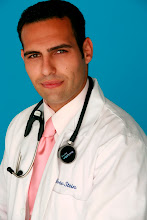The intervertebral disk is like a shock-absorber located between each vertebra in our spine extending from the tail bone to the upper neck. When healthy, your disks truly do function as shock absorbers. There are two parts to the disk - the inner part (called the nucleus) which is the liquid-like center and the outer part (the annulus), which is tough, laminated and rubber-like whose job is to hold the nucleus in the center of the disk. The annulus has concentric rings which look similar to the rings of an oak tree trunk and the strength of these laminated rings is due to the fibers crisscrossing, creating a self-sealing, secure border for the nucleus center. In spite of this great anatomical structure, our disks degenerate and can crack or tear allowing the more liquid-like nucleus to leak out of the annulus creating the classic “slipped disk” (technically referred to as a herniated or ruptured disk). When the herniated disk presses into the nerve that goes down the leg, pain is felt along its course and can radiate all the way to the foot. There are five vertebrae and disks with a pair of nerves that go into each leg and depending which disk ruptures, pain will follow a different course down the leg, which is why we ask you if you feel the pain more in the back or in the front of the leg. When the disk tears prior to both disk herniation and leg pain, low back pain occurs because the nerve fibers that are normally only located in the outer third of the disk grow into the central portion of the disk, making it generate more pain.
So now for the important question, “…what can I do for it?” When you visit our office, we will ask you about how you injured your back. Often, the cause of a herniated disk can be the accumulation of multiple events over time. It certainly can happen after one major event, like our example of lifting a rock out of a hole, but that is usually the “straw that breaks the camel’s back” and not the sole cause. Many researchers have reported it is rare for a healthy disk to herniate. Rather, disk degeneration with tears already present sets up the situation where a bend plus a twist, “…finishes the job.” The orthopedic and neurological examination will usually clearly identify the level of herniation. Chiropractic treatment often includes traction types of techniques, some form of spinal manipulation or mobilization, extension exercises, physical therapy modalities like electric stimulation, low level laser, or ultrasound, and ice therapy. Core / trunk strengthening and posture management are also commonly applied and, proper bending/lifting/pulling/pushing techniques are taught. We realize that you have a choice in where you choose for your healthcare services. If you, a friend or family member requires care for low back pain, we sincerely appreciate the trust and confidence shown by choosing our services and look forward in serving you and your family presently and, in the future

No comments:
Post a Comment